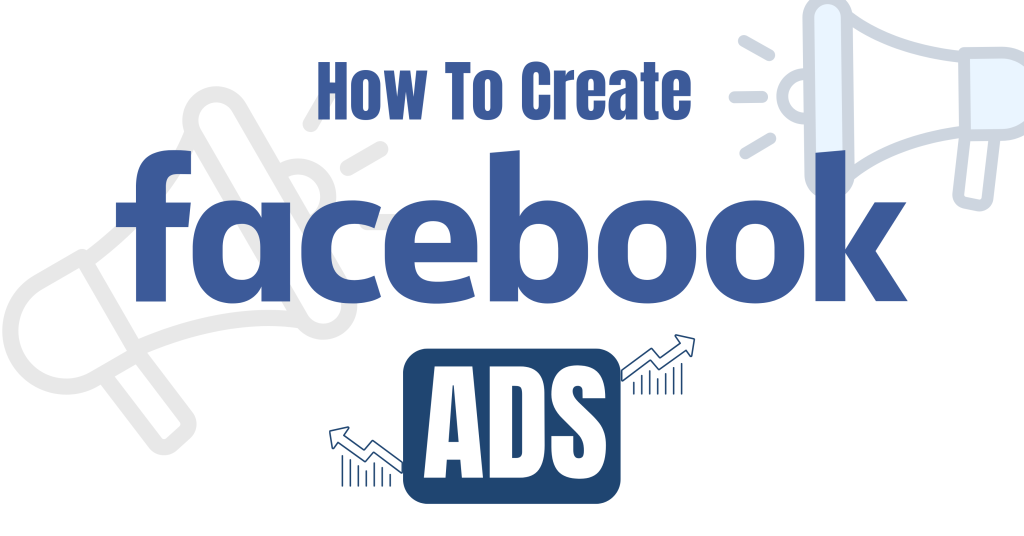
Are you searching for the right information regarding how to create Facebook ads? Then this is your stop to end your search. We all know the importance of facebook in our lives today. Below is a step to step digital chaperon to brief every single step of this procedure of creating facebook ads. Advertising on facebook is undoubtedly a necessary skill for most of the marketers. Facebook advertisements reach upto 2.18 billion people which equals 30% of the worlds population. They not only sells the product, but create major brand awareness and ofcourse extract traffic towards particular page or group.
To make it more readable and helpful, a number of some important steps are jotted down, elaborating the structural procedure of creating facebook ads. Initiating the procedure, it begins with;
- CREATING AN ACCOUNT AFFILIATED WITH FACEBOOK ADS MANAGER
This particular manager of facebook ads is a trailblazing dashboard that shows overall demo of all their campaigns. The dashboard displays an estimate of your daily spending up front. The dashboard’s column-based layout makes it simple to filterate advertisements and generate a personalised look of results. Reach, frequency, and cost are crucial metrics that are easily accessible, making a performance based a no-brainer.
Outline: How to Create Facebook Ads
Creating an Account with Facebook Ads Manager
Creating Ads Using Facebook Ads Manager. D
Selecting Campaign Objectives
Selecting Your Targeted Audience
Setting Your Budget
Creating the Ad
Monitoring Your Ad’s Performance (Metrics)
Accessing and Reviewing Facebook Ads Reports
Create an account with Facebook Ads Manager
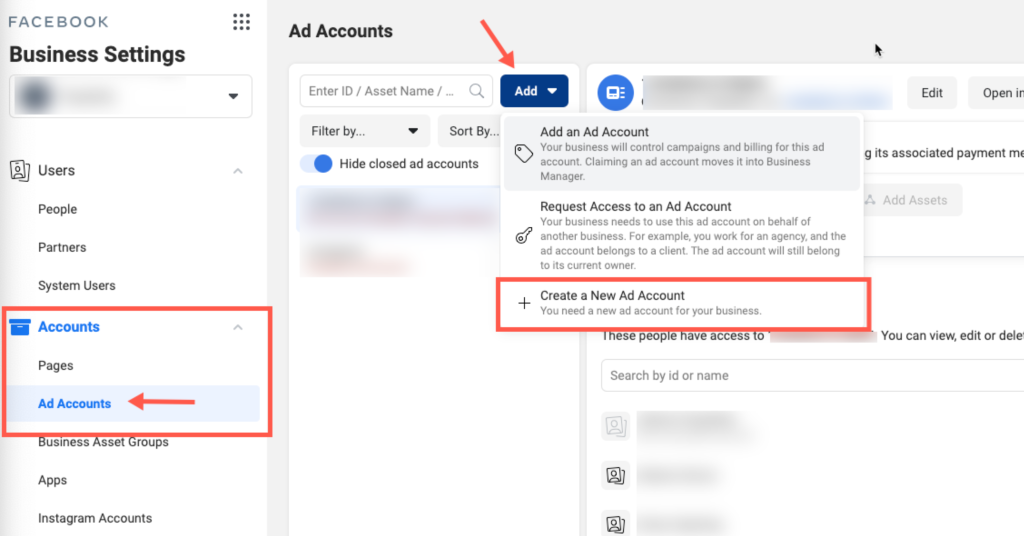
Facebook’s Ad Manager is a sophisticated dashboard that provides users with an overview of all their campaigns.
Upfront, the dashboard estimates how much you’re spending each day. The dashboard is organized by columns, which makes it easy to filter through your ads so you can create a custom view of your results. Key numbers like reach, frequency, and cost are readily available, making reporting on performance a no-brainer.
To use the Facebook Ads Manager, you’ll need a Facebook Business Page (learn how to set one up here). This is because you can’t run ads through personal profiles.
Then, follow these steps:
- Navigate to https://www.facebook.com/business/tools/ads-manager.
- Click the button that says “Go to Ads Manager.”
- Confirm your information on the ad account setup page.
- Set up your payment method.
- Save changes.
Once set up, the Ads Manager becomes the control center for your Facebook ads.
Start creating an ad through Facebook’s Ads Manager
Once you log into the Ads Manager, you’ll see a performance dashboard where all your campaigns, ad sets, and ads will be listed, including the results they’ve driven for your Facebook page. This dashboard will be empty unless you’ve already created an ad for your Facebook page.
To create a new campaign, ad set, or ad through the Facebook Ad Manager, tab over to the type of ad you want to create and click the green “Create” button to the far left of these ad types, as shown below. You can see from this screenshot that we’re currently set to create a new campaign.
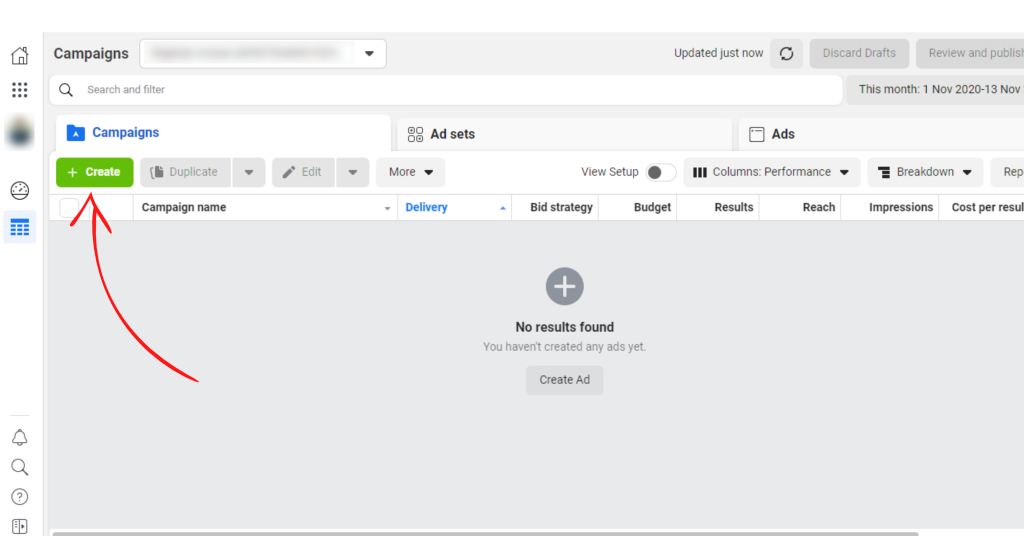
Choose an Objective
Like many social media advertising networks, Facebook Ads Manager is designed for your campaign objective. Therefore, before getting started, Ads Manager will prompt you to choose an objective for your campaign:
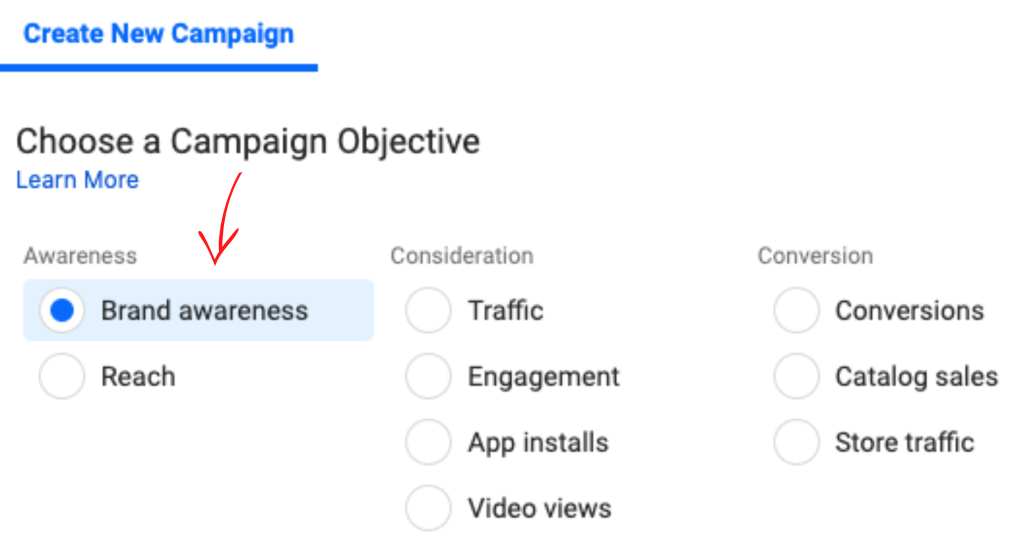
There are 11 different objectives to choose from. The list includes everything from general brand awareness to getting installs of your app to increasing traffic to your online store.
By choosing one of these objectives, you’re giving Facebook a better idea of what you’d like to do so they can present you with the best-suited ad options. For example, as shown in the screenshot above, Facebook’s ad options include the following:
- Brand awareness
- Reach
- Website traffic
- Engagement
- App installs
- Video views
- Lead generation
- Messages
- Conversions
- Catalog sales
- Store traffic
Let’s say, for the sake of this blog post; you’re looking to drive more traffic to your website. When you select this option, Facebook will prompt you to enter the URL you’re looking to promote. If you’re using marketing automation software, be sure to create a unique tracking URL with UTM parameters to ensure that you’ll be able to keep track of traffic and conversions from this ad. For HubSpot customers, this can be done using the Tracking URL Builder.
Once selected, Facebook will display the ad option that makes the most sense in achieving this objective.
Featured Tool: Facebook Advertising Checklist
Don’t forget to download the Facebook Ads Checklist and save it for Facebook ad campaign best practices.
Choose Your Audience
Your next step is to configure your target audience — you can do this for each ad set that belongs to the same campaign. For example, suppose you’re just starting with paid advertising on Facebook. In that case, you’ll likely have to experiment with several different targeting options until you reach an audience that fits just right.
To narrow your focus, Facebook’s targeting criteria are accompanied by an audience definition gauge. This tool — located to the right of the audience targeting fields — takes all of your selected properties into consideration to come up with a potential reach number.
Consider your objective if you’re wavering between choosing a specific audience over a broad one. For example, if you’re looking to drive traffic, you’ll probably want to focus on the type of people you know will be interested in your offering. However, if you want to build brand awareness or promote a widely appealing offer, feel free to focus on a more general audience.
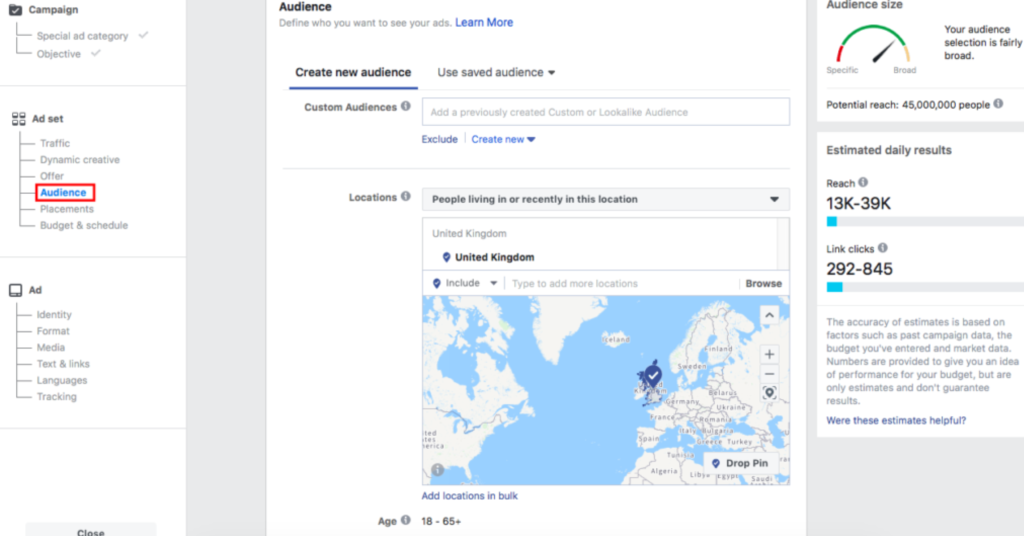
Facebook’s built-in targeting is vast, including options such as:
- Location
- Age
- Gender
- Languages
- Relationship
- Education
- Work
- Financial
- Home
- Ethnic Affinity
- Generation
- Parents
- Politics (U.S. only)
- Life Events
- Interests
- Behaviors
- Connections
You also have the option to select a Custom Audience — this allows you to target people on Facebook who are in your company’s contact database, visited a page on your website with a tracking pixel, or use your app or game. To learn more about how to set up a Custom Audience on Facebook, check out these instructions. (For more on the specifics of these criteria, visit this Facebook targeting resource.)
Once you find a group that responds well to your ads, Facebook allows you to save these audiences from being used again later — so you may not need to dive into this step once you’ve been running Facebook ads for a while.
Set your Budget
Facebook allows you to set either a daily budget or a lifetime budget. Here’s how they differ from each other:
- Daily budget. If you want your ad set to run continuously throughout the day, this is the option you’ll want to go for. Using a daily budget means that Facebook will pace your spending per day. Remember that the minimum daily budget for an ad set is USD 1.00 and must be at least 2X your CPC.
- Lifetime budget. Suppose you’re looking to run your ad for a specified time. Select lifetime budget. This means Facebook will pace your spending over the period you set for the ad to run.
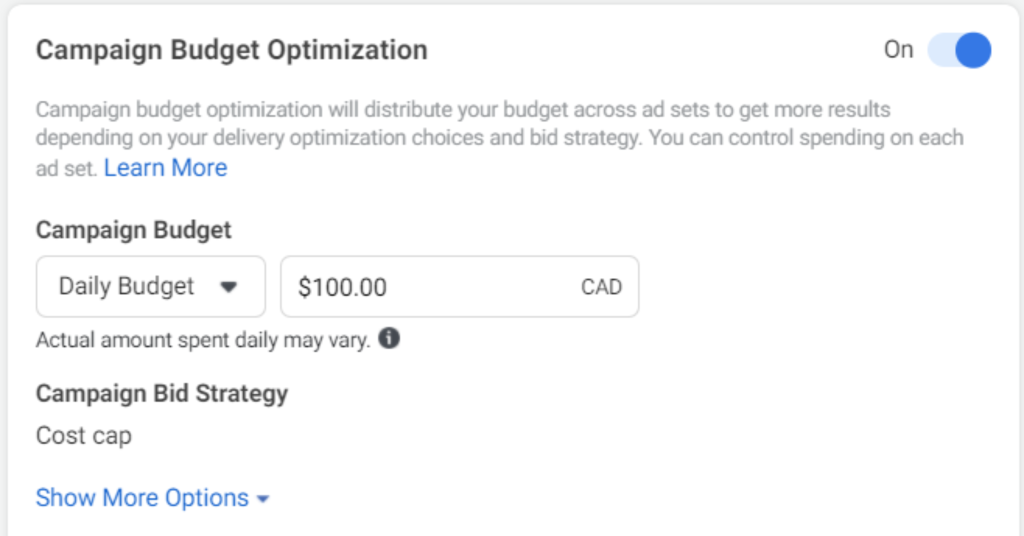
To further specify your budgeting, turn to the advanced options — this option is linked at the bottom of the screenshot shown above. This section allows you to specify a few things:
Schedule
Choose whether or not your want your campaign to run immediately and continuously or if you want to customize the start and end dates. You can also set parameters so that your ads only run during specific hours and days of the week.
Optimization & Pricing
Choose whether or not you want to bid for your objective, clicks, or impressions. (This will alter how your ad is displayed and paid for.) By doing so, you’ll pay for your ad to be shown to people within your target audience who are more likely to complete your desired action, but Facebook will control your maximum bid.
If you don’t want Facebook to set optimal bids for you, you’ll want to opt for manual bidding. This option awards you full control over how much you’re willing to pay per action completed. However, Facebook will provide a suggested bid based on other advertisers’ behavior to give you a sense of what you should shoot for.
Delivery
Delivery type falls under two categories: standard and accelerated. Standard delivery will show your ads throughout the day, while accelerated delivery helps you reach an audience quickly for time-sensitive ads (Note: this option requires manual bid pricing).
Create Your Ad
What do you want your ad to look like? It all depends on your original objective.
If you want to increase the number of clicks to your website, Facebook’s Ad Manager will suggest the Clicks to Website ad options. That makes sense, right?
This ad option is broken down into two formats: Links and Carousels. You can display a single-image ad (Links) or a multi-image ad (Carousel) with three to five scrolling images at no additional cost.
A Links ad will be displayed like this:
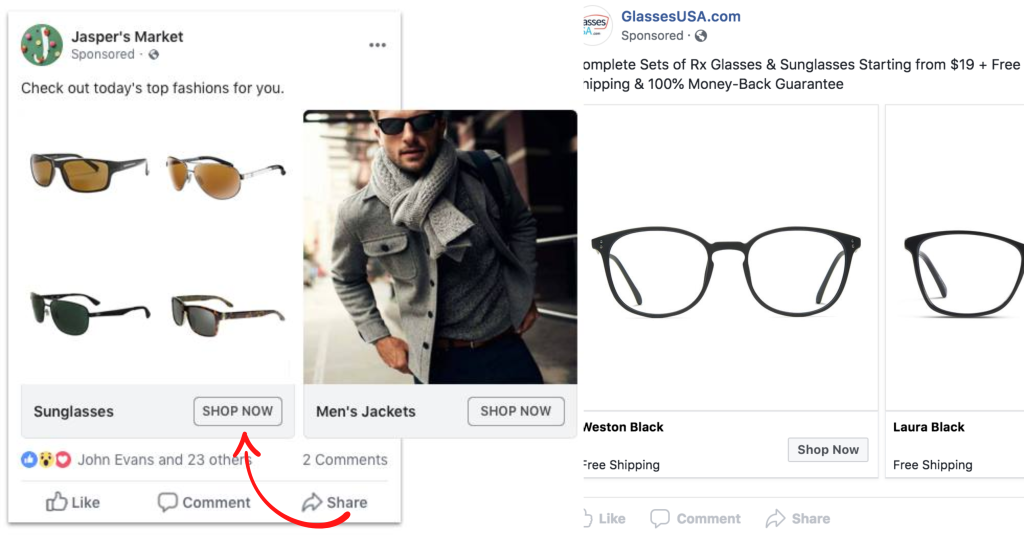
A Carousel ad will be displayed like this:
Once you decide between the two, you’ll need to upload your creative assets. It’s important to note that for each type of ad, Facebook requires users to adhere to certain design criteria.
For single-image ads, Facebook asks that users adhere to the following design recommendations:
- Text: 125 characters
- Ad Headline: 25 characters
- Image ratio: 1.91:1
- Image resolution (including CTA): 1080 x 1080 pixels
For multi-image ads — also known as Carousel Ads — Facebook provides the following design recommendations:
- Recommended image size: 1080 x 1080 pixels
- Image ratio: 1:1
- Text: 125 characters
- Headline: 40 characters
- Link description: 20 characters
Your image may not include more than 20% text. See how much text is on your image.
Remember that these are the ad options for the “Traffic” objective.
if you selected “boost your posts,” you’d be presented with different ad options like the Desktop News Feed Be aware that if your ad isn’t associated with a Facebook page, you’ll only be able to run Desktop Right Column ads. You can learn how to create a Facebook Page to leverage all three display locations. Once your ads run, you’ll want to keep an eye on how they’re doing. To see their results, you’ll want to look in the Facebook Ad Manager and your marketing software. According to Facebook, here are some of the key metrics to look for (and their definitions): Regardless of which of these metrics you use to measure the success of your advertising efforts, you can find the data in the Ads Manager. As you analyze, you’ll be thinking about your data in four main ways, depending on how granular you need to get: This gives a high-level view of performance across all campaigns. In addition, you’ll find aggregate data that gives you a bird’s eye view. Navigate to the ads manager and click Account Overview. From there, you’ll be able to customize the metrics you want to see, drill down time ranges, and more. You can also get far more specific with your analysis by checking the performance of campaigns and even down to individual ads. This can help you determine which messaging, audiences, and collateral resonate the best. All you have to do is navigate to the Campaigns, Ad Sets, or Ads tabs next to Account Overview in the ads manager. You can receive custom reports via email as well. Here’s how to set it up: While there are certainly many details to keep straight when planning a paid Facebook ad, it’s important that you don’t lose sight of the big picture. Of course, reporting on clicks and conversions from Facebook is important. However, if you’re using URLs with specific UTM codes, you have an opportunity to measure your ads’ full-funnel effectiveness using your marketing software. Tracking URLs will help your marketing software track how many leads, or better yet, how many customers you’ve gained from your advertising efforts. This information is useful in determining the ROI of this source and can also be used to inform your overall Facebook marketing strategy. If you’re a HubSpot customer using our ads tool, this process is already taken care of for you. You can create unique tracking codes for your Facebook campaign by navigating to the Tracking URL Builder on the Reports Home page. All you’ll need to do is plug in the URL, attach a campaign, and choose the source to which you want the URL to be attributed in your Sources Report. Then, once your ad launches and you start getting traffic and conversions on your website, you’ll be able to track how many visits, contacts easily, and customers you’re generating. Now that you know how to set up an ad, it’s time to create one of your own to spread brand awareness on Facebook and generate traffic and leads from your ideal prospects on the platform. Another strategy is to consider a daily budget of about $80. You have the choice to select a maximum spending limit when you set up your advertisements. Your advertisement should be readable on smaller devices. The amount of text that an organisation may add to an image on Facebook is capped at 20%. Split testing is an option that Facebook provides. By using this technique, you can produce numerous versions of a same advertisement within a single campaign, each utilising the photos, text, and headlines you want. The fact that you can change and update advertising at any moment is one aspect of Facebook’s platform that we truly value.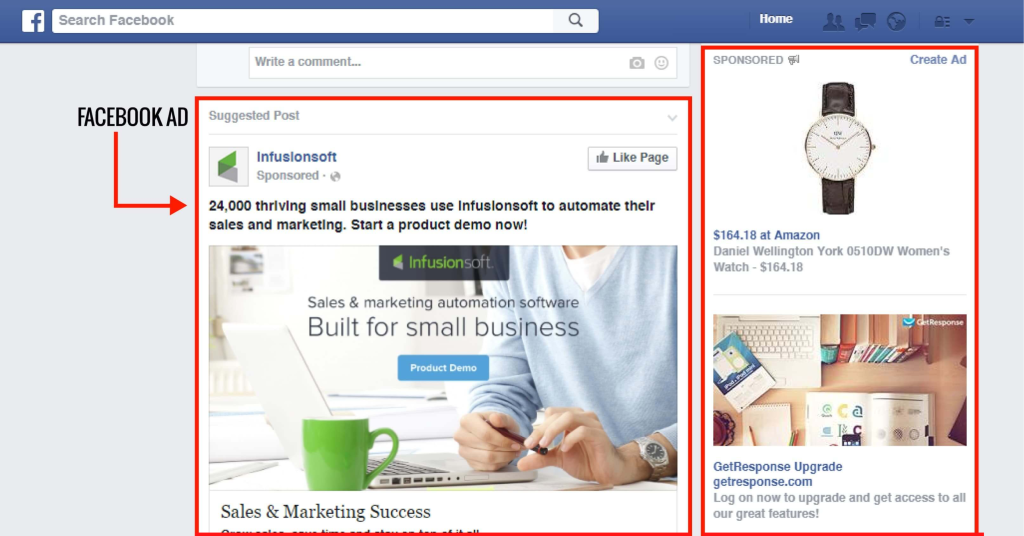
Mobile News Feed
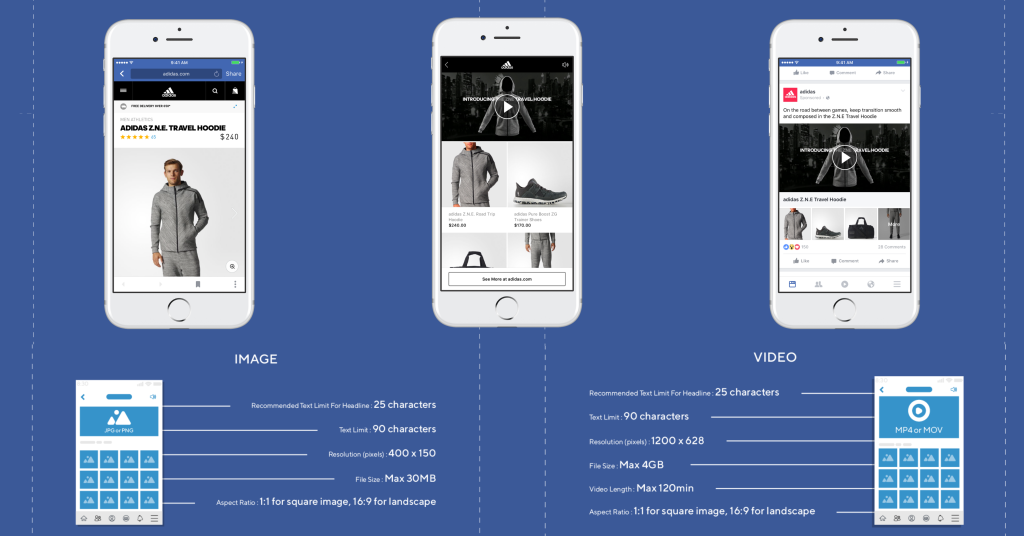
Desktop Right Column
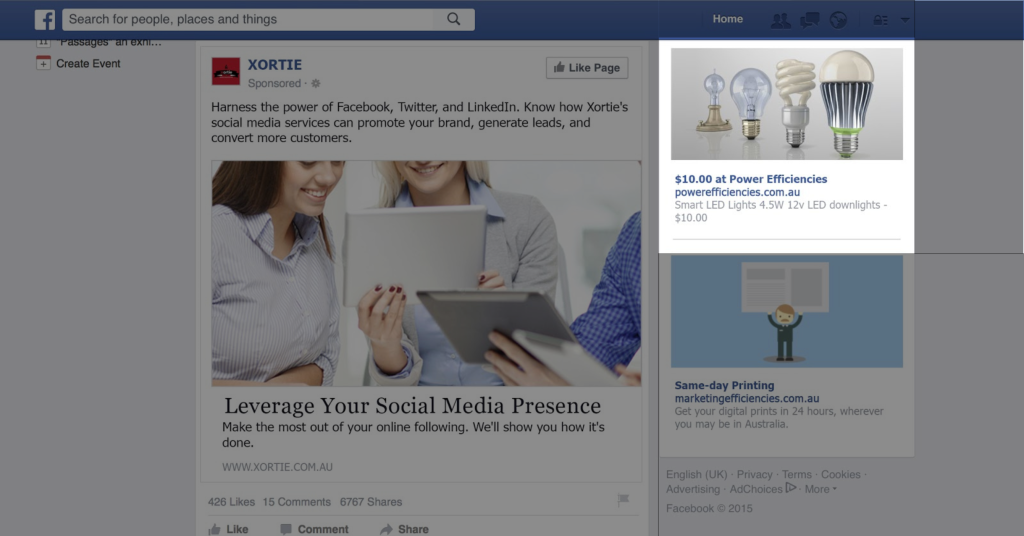
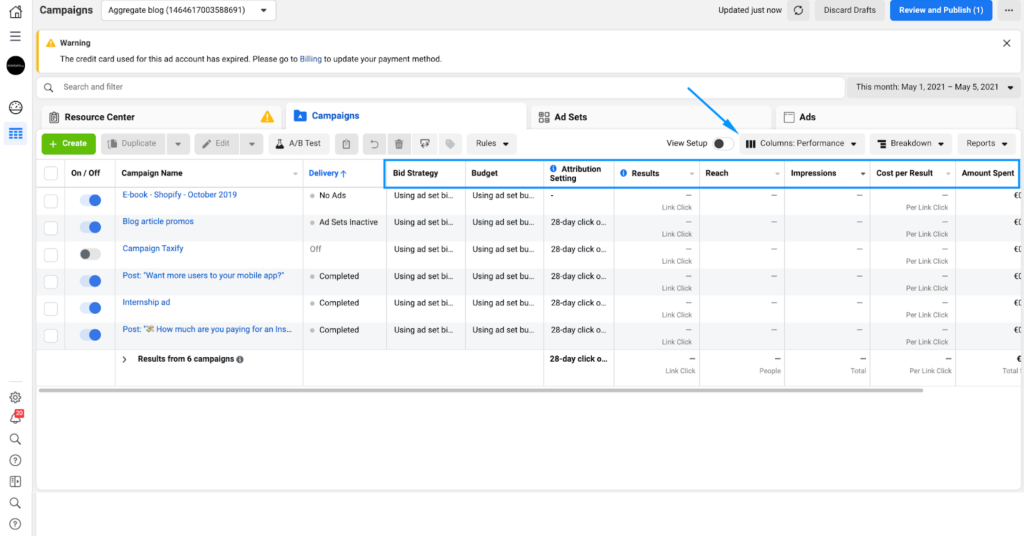
The Account Level
The Campaign, Ad Set, or Ad Level
Reporting on Facebook Ad Performance
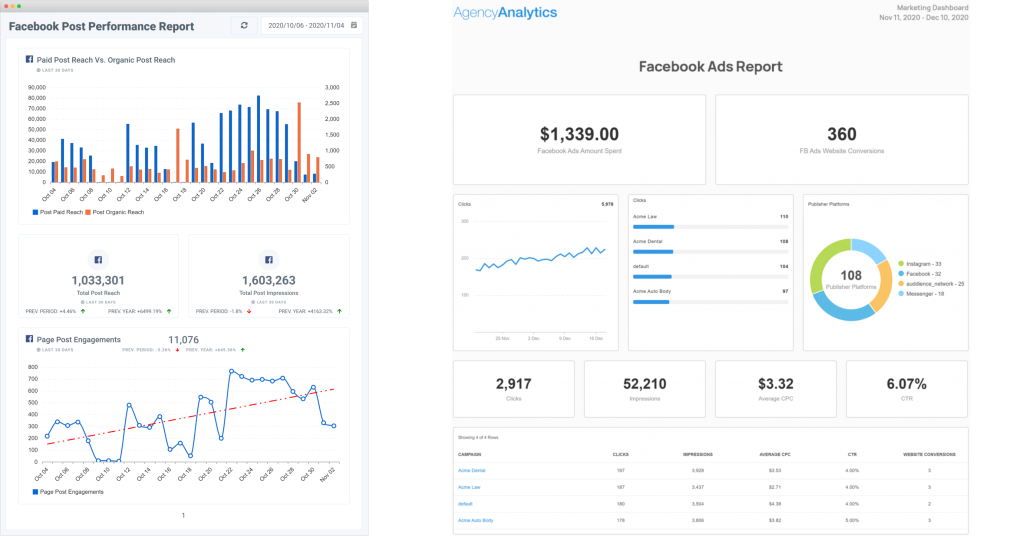
1. How much should I budget for Facebook ads?
2. What makes a well-designed Facebood ad?
3. Can my Facebook ads be tested?
4. What if I wish to alter my Facebook ads?
